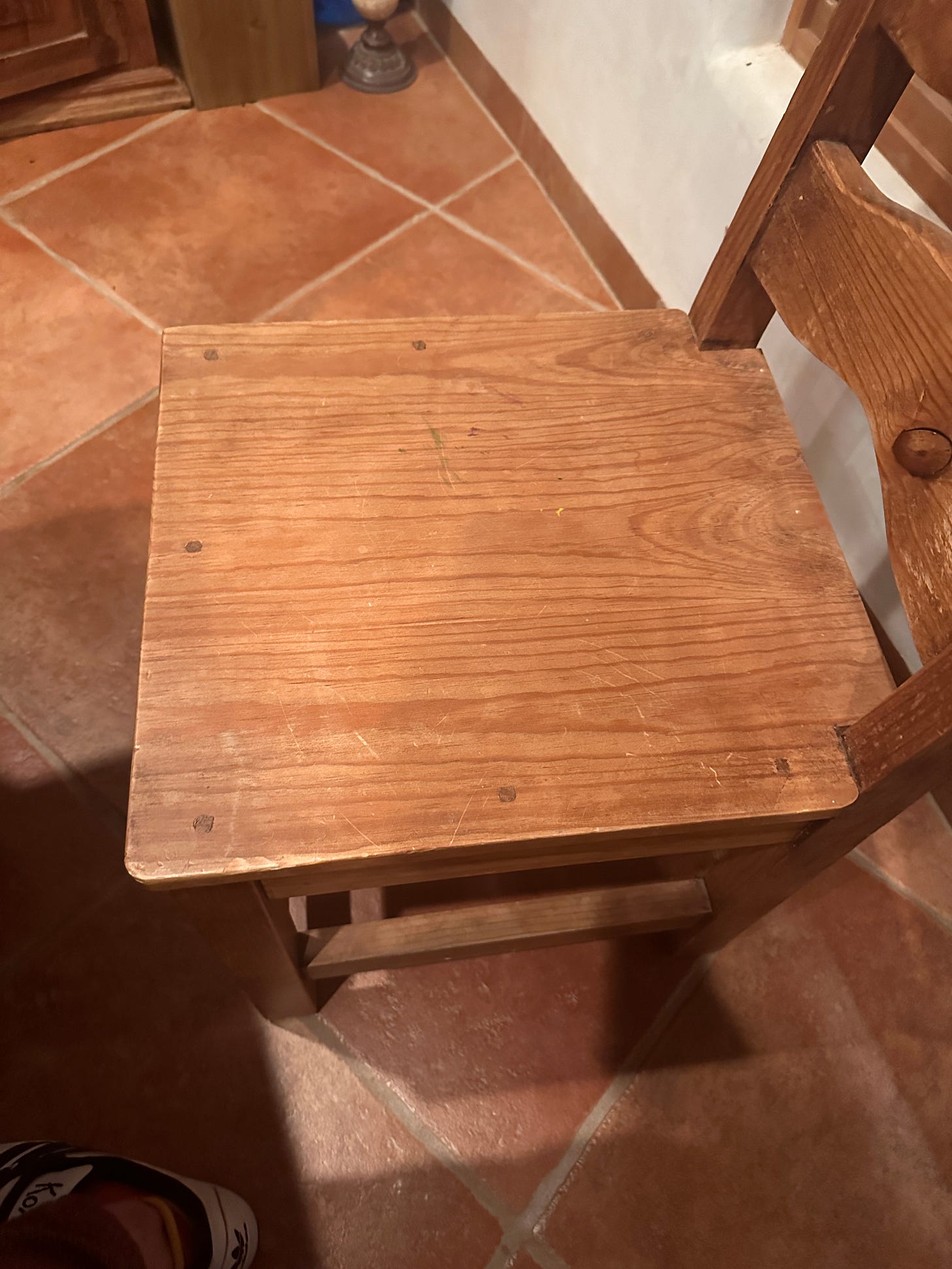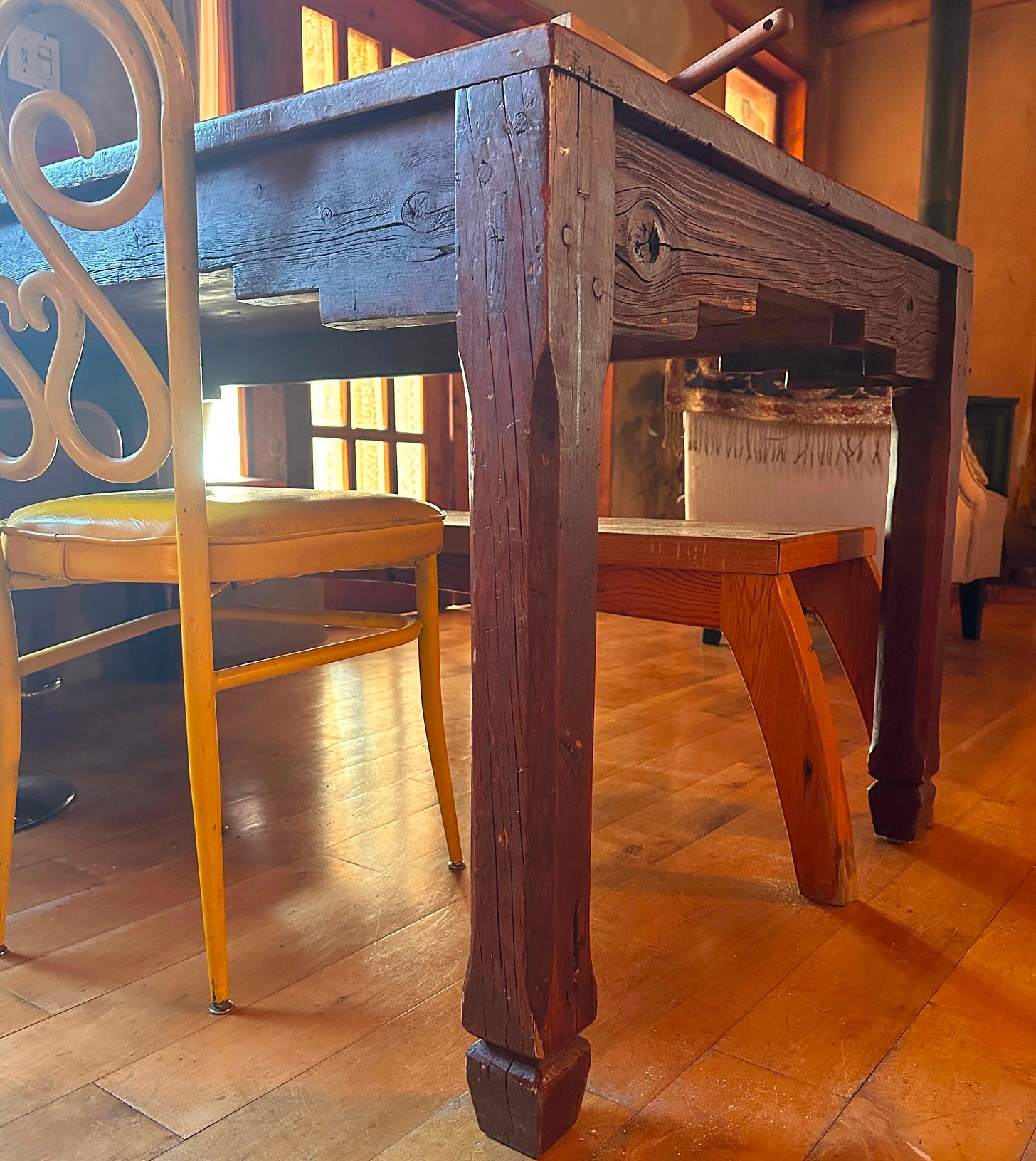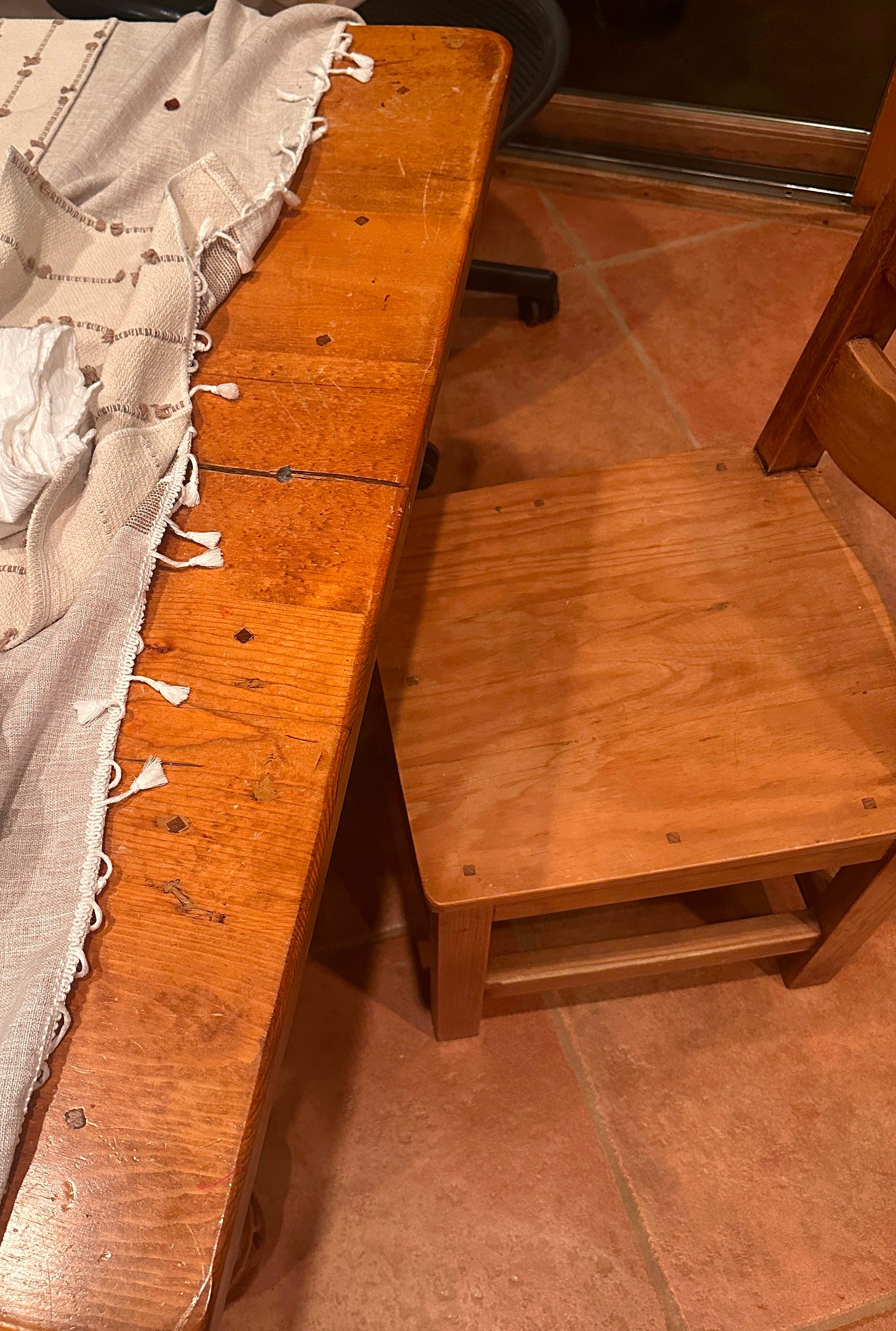Keep it local
Staying local in woodworking is much more beneficial than you think
Yesterday I posted about some veneer/marquetry panels that experienced some unexpected failure due to wood movement. The point I was trying to make is pretty simple: if you go up against wood thinking you’ll definitely know how it’s going to behave, you’re going to have a bad time. But there’s another point here worth making.
I’ve been creating marquetry panels for quite a long time now, and many have hung in my house for years. I’ve applied them to solid wood substrates, MDF, baltic birch, and dogshit home center plywood, and have never seen any issues crop up like the one in yesterday’s post.
The only difference that I can really pin down between these panels and others I’ve done in the past is the location change. Of course, I’ve shipped my work all over the country, and this is the first I’m hearing of panel failure this bad, but that doesn’t mean I can rule out the location change as the culprit in this instance. Remember: wood is weird.
A couple weeks back I was listening to the Fine Woodworking’s Shop Talk Live (an incredibly good podcast that has really fantastic guests) and Mike Pekovich (I believe, eek!) recalled his time building furniture in a dry environment. He explained that due to the stable humidity, wood movement wasn’t a primary concern and thus wasn’t necessarily accounted for when designing and building. Later, he moved across the country to the northeast, and over the next few months heard a series of “pops” — the wood in furniture he built had swelled and disaster ensued.
His point in bringing this up wasn’t that he should have accounted for wood movement. Instead, he used it as an example in urging furniture makers to be more local in their approach to woodworking.
I think this is a pretty easy concept to get on board with. “Keep it local” has been a slogan I’ve heard my entire life, and for good reason. If you want to learn more about the positive effects of being local with the inputs in your woodworking, I encourage you to talk to Shea. He’s much more educated and passionate about that than I, and I’m sure he’ll write about it in detail at some point.
As for the positive effects of being local with the outputs of your woodworking, I think the failed veneer panels and Pekovich’s story make something very clear. Furniture made in a particular location should be made specifically for that particular location.
I spent the last holiday season in Taos, New Mexico with my wife’s family. One thing I really took note of was how tabletops and chair seats were affixed to their aprons. In almost every single case, they were just fastened with a series of dowels all the way around.

If this seems like it’s breaking all the rules and should probably have a big crack going down the center, we’re thinking alike. But the environment there is so dry and all this furniture was undoubtedly made there. It’s almost always pine, too, so that helps. And remember: wood is weird.
I think this is super cool! This is furniture that is exactly tailored to this particular environment. It not only will look ridiculous if you take it elsewhere, but it will also punish you by revolting with cracks.
The whole time I was there, I kept noticing how all of the furniture was “of that place.” If you took pretty much anything in my mother in law’s house and put it in my 1800s Victorian, it would look absolutely ridiculous. And if I put a shaker blanket chest in her adobe home, it would also look ridiculous.
As someone who grew up and lives in the northeast, I really appreciate this. Maybe it’s just me being old and cynical (it definitely is), but where I’m from kind of just feels like a constellation of mega highways, big box stores, and chain restaurants.
I’m absolutely painting with a broad brush — there are plenty of spots in the northeast that are great. But New Mexico is certainly very different and you feel it everywhere, even in the furniture you see. That’s cool as hell.
Anyway, you get my point by now. Keeping furniture in the place it was made can provide aesthetic and structural benefits in your woodworking. Just make sure you always keep the most important thing top of mind: wood is weird.
NOTE: SHAMELESS SELF PROMOTION, BUT MY BOOK, “Complete Starter Guide to Making Wooden Boxes” IS CURRENTLY AVAILABLE FOR PREORDER AND WILL BE RELEASED MAY 6, 2025 BY FOX CHAPEL PUBLISHING!



